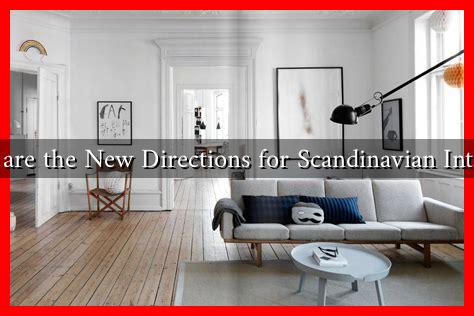-
Table of Contents
What are the New Directions for Scandinavian Interiors?
Scandinavian design has long been celebrated for its minimalism, functionality, and connection to nature. However, as we move further into the 21st century, the aesthetic is evolving, embracing new trends and ideas that reflect contemporary lifestyles and values. This article explores the new directions for Scandinavian interiors, highlighting innovative approaches, sustainable practices, and the integration of technology.
The Shift Towards Sustainability
One of the most significant trends in Scandinavian interiors is the increasing emphasis on sustainability. As environmental concerns grow, designers are prioritizing eco-friendly materials and practices. This shift is not just a trend but a fundamental change in how spaces are designed and furnished.
- Natural Materials: Designers are opting for materials like reclaimed wood, bamboo, and organic textiles. These materials not only reduce environmental impact but also add warmth and character to spaces.
- Upcycling: The practice of upcycling old furniture and decor is gaining popularity. This not only minimizes waste but also allows for unique, personalized interiors.
- Energy Efficiency: Incorporating energy-efficient appliances and smart home technology is becoming standard. This aligns with the Scandinavian ethos of functionality and practicality.
For instance, the Swedish furniture brand IKEA has committed to using only renewable or recycled materials by 2030, showcasing a commitment to sustainability that resonates with consumers.
Embracing Color and Texture
While traditional Scandinavian design often leans towards a neutral palette, new directions are embracing bolder colors and varied textures. This shift reflects a desire for personalization and emotional connection in living spaces.
- Bold Colors: Designers are incorporating rich hues like deep greens, navy blues, and warm terracotta to create inviting atmospheres.
- Layered Textures: Mixing materials such as velvet, wool, and natural fibers adds depth and interest to interiors.
- Artistic Elements: Incorporating art pieces and handcrafted items can create focal points and express individuality.
For example, the Danish design studio HAY has been at the forefront of this trend, offering furniture and decor that combine vibrant colors with innovative designs.
Integrating Technology
As technology continues to advance, Scandinavian interiors are increasingly incorporating smart home solutions. This integration enhances functionality while maintaining the aesthetic simplicity that defines the style.
- Smart Lighting: Adjustable lighting systems that can be controlled via smartphones or voice commands are becoming commonplace.
- Home Automation: Systems that manage heating, security, and entertainment can be seamlessly integrated into the design.
- Virtual Reality: Designers are using VR to create immersive experiences for clients, allowing them to visualize spaces before they are built.
Companies like Nordic Design Collective are leading the way in merging technology with traditional Scandinavian aesthetics, offering products that are both functional and stylish.
Case Studies: Innovative Scandinavian Interiors
Several projects exemplify the new directions in Scandinavian interiors:
- The Treetop Hotel in Sweden: This eco-friendly hotel features treehouse-style accommodations that blend seamlessly with nature, showcasing sustainable materials and innovative design.
- Studio Eero Saarinen: Known for its modernist approach, this studio has embraced new materials and technologies to create functional yet artistic spaces.
- Helsinki’s Löyly Sauna: This public sauna combines traditional Finnish design with modern architecture, emphasizing sustainability and community.
Conclusion
The evolution of Scandinavian interiors reflects broader societal changes, including a heightened awareness of sustainability, a desire for personalization, and the integration of technology. As designers continue to innovate, the essence of Scandinavian design—simplicity, functionality, and a connection to nature—remains at the core, while new elements breathe fresh life into this timeless aesthetic. By embracing these new directions, homeowners can create spaces that are not only beautiful but also reflective of contemporary values and lifestyles.

